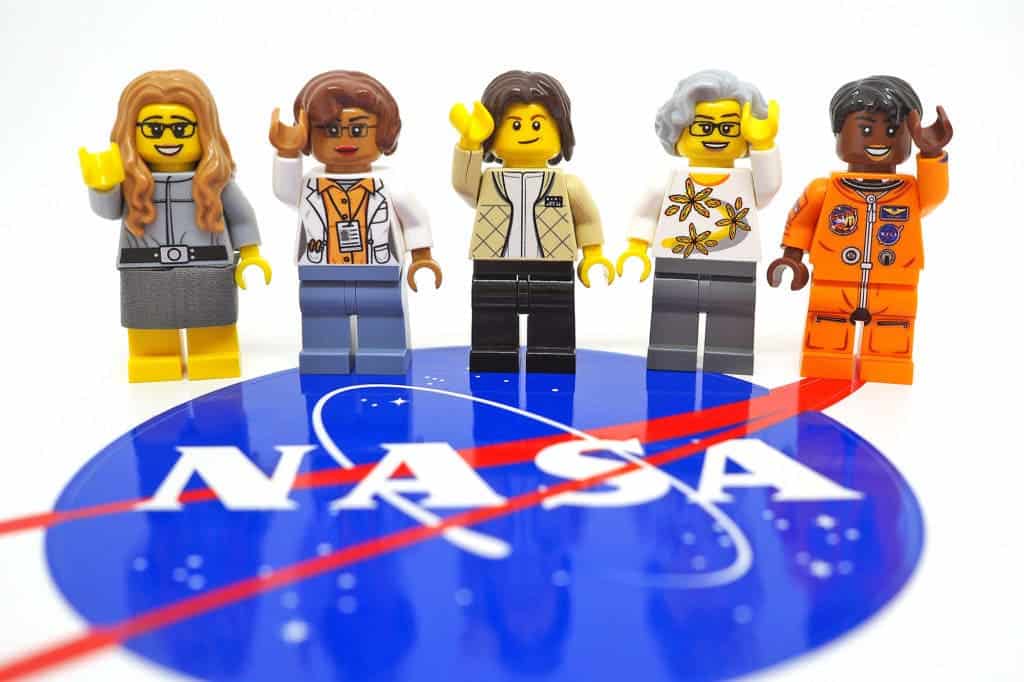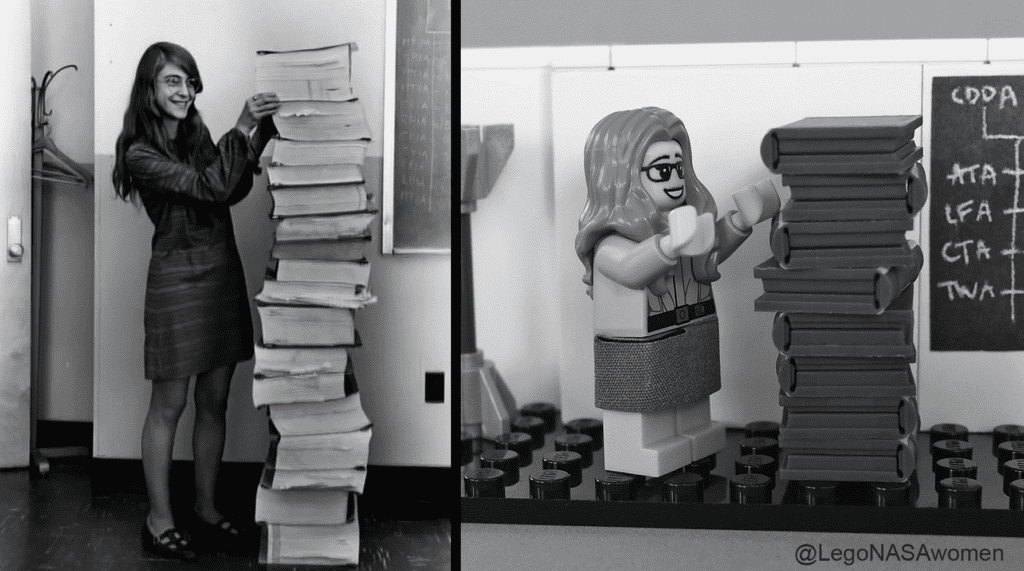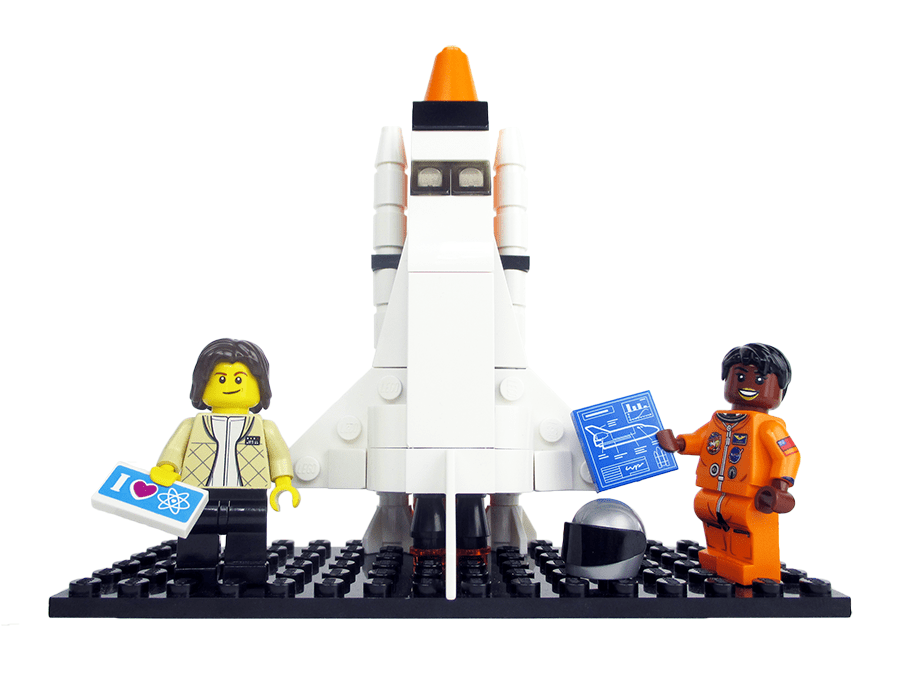
Introducing the Lego-ified Women of NASA (left to right): Margaret Hamilton, Katherine Johnson, Sally Ride, Nancy Grace Roman, and Mae Jemison. Image credits: Maia Weinstock
Normalizing women in science
“I was inspired to create the set as a way to celebrate women who’ve made key contributions at NASA and as way to help kids learn through play. I have been making minifigures of real scientists and engineers for a number of years now, and I decided to create this kit for the LEGO Ideas crowdsourcing platform, which invites anyone to submit new ideas for real LEGO sets” — Maia Weinstock

The famous photo of Margaret Hamilton standing next to the stack of software that she and her MIT team produced to navigate the Apollo project…and recreated in Lego. Image credits: Maia Weinstock
Honouring influential women
The real women that are featured in the Legos are:
- Computer scientist Margaret Hamilton: she developed the on-board flight software for the Apollo missions to the moon in the 1960s and popularized the modern concept of software.
- Mathematician and space scientist Katherine Johnson: she calculated and checked trajectories for the Mercury and Apollo programs, including the famous Apollo 11 mission that landed humans on the moon for the first time.
- Astronaut, physicist and educator Sally Ride: she was the first American woman in space in 1983 and later encouraged children, especially girls, to pursue science.
- Astronomer Nancy Grace Roman: she was integral in planning the Hubble Space Telescope and developed NASA’s astronomy research program.
- Astronaut and entrepreneur Mae Jemison: she was the first African-American woman in space in 1992 and during her retirement, established a technology and education company.
As far as choosing characters: I wanted to show a variety of women with very diverse backgrounds — in terms of their professions within NASA, their cultural backgrounds, different ages, and so on— Maia Weinstock
“Each individual scene tells something about the minifigure or minifigures it’s with: So, for example, I have the two astronauts, Sally Ride and Mae Jemison, standing with a mini LEGO version of the space shuttle, and astronomer Nancy Grace Roman, known to many as the “mother of Hubble,” standing with a tiny model of the Hubble Space Telescope” — Maia Weinstock
It is great that Lego is recognizing the achievements of these female scientists— and making women in science something normal and fun for children.











